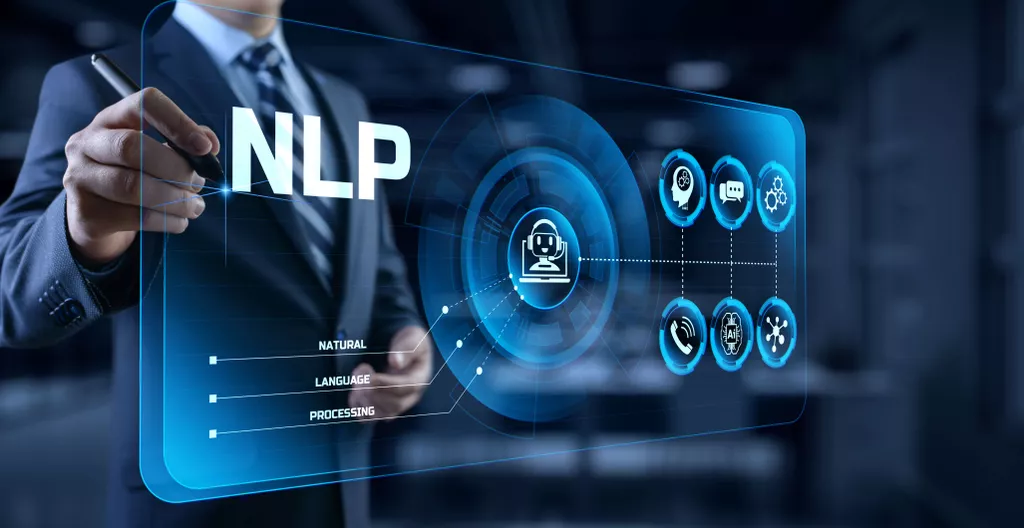
The table below will clearly make you understand the difference in the customer experience with and without conversational AI. They’re using it to control house remotes and speakers, plan their days, get weather updates, and manage their tasks. 37% of CEOs leverage conversational AI to deliver exceptional customer experience. Conversational AI includes additional elements that you wouldn’t find in chatbots. In other words, every chatbot is a conversational AI but every conversational AI is not a chatbot.

Once buried within our favorite movie, AI is now the technology powerhouse which everyone is willing to inculcate within their organization. AI-powered Chatbots are transforming customer care and creating rewarding customer experiences like never before. You can create bots powered by conversational AI and NLP with chatbot providers such as Tidio. You can even use our visual flow builder to design complex conversation scenarios. Summing up, conversational AI offers several crucial differentiators and marks a substantial development in human-machine interactions. For starters, conversational AI enables people to communicate with AI systems more naturally and human-likely by enabling natural language understanding.
Intelligent Virtual Assistants (IVAs)
Last but not the least, the “smartness” of the conversational AI depends heavily on the data set used for its training. To get the best out of the bot, training data must be a good enough representation of how real users ask in everyday conversations. Alternatively, a human evaluator could go through the chat logs to randomly mark the accuracy of the bot’s responses.
- Rule-based chatbots can only operate using text commands, which limits their use compared to conversational AI, which can be communicated through voice.
- In the last decade, chatbots are slowly being replaced by conversational AI chatbots, which are smarter, efficient, and effective versions of the previously launched chatbots.
- Conversational AI can handle common customer queries, resolve issues, or guide customers through the buying process, providing timely assistance and enhancing the customer experience.
- They will offer more accurate, insightful, and human-like responses for all we can anticipate.
- Rule-based chatbots—also known as decision-tree, menu-based, script-based, button-based, or basic chatbots—are the most rudimentary type of chatbots.
- It’s a good idea to focus on your chatbot’s purpose before deciding on the right path.
Both types of chatbots provide a layer of friendly self-service between a business and its customers. Rule-based chatbots have some limitations and they are surely not the best option when a business thinks of catering to modern customers and needs. Thanks to chatbots, customers can now order food without making a phone call.
What is a Key Differentiator of Conversational AI?
Implementing AI technology in call centers or customer support departments can be very beneficial. This would free up business owners to deal with more complicated issues while the AI handles customer and user interactions. Due to the limited configuration of rule-based chatbots, they can be deployed quickly for small to medium-sized businesses that don’t require a large amount of data to respond to customer requests. As businesses look to improve their customer experience, they will need the ultimate platform in order to do so.
Why some publishers are giving their AI chatbots a personality – Digiday
Why some publishers are giving their AI chatbots a personality.
Posted: Fri, 09 Jun 2023 04:01:47 GMT [source]
At their core, these systems are powered by natural language processing (NLP), which is the ability of a computer to understand human language. It develops speech recognition, natural language understanding, sound recognition and metadialog.com search technologies. SAP Conversational AI automates your business processes and improves customer support with AI chatbots. Conversational AI is a technology that enables machines to communicate with humans in a natural way.
Speech recognition
He’s written extensively on a range of topics including, marketing, AI chatbots, omnichannel messaging platforms, and many more. Having a conversational AI chatbot thus becomes important when the main focus of a business is on customer engagement and experience. What’s more, you can combine the live chat software with the chatbot and ensure hybrid support to users across the journey with your brand.
- By providing a more natural, human-like conversational experience, conversational AI can be used to great effect in a customer service environment.
- They’re great for smaller businesses that have straightforward questions and answers.
- NLP is a field of AI that is growing rapidly, and chatbots and voice assistants are two of its most visible applications.
- People find it more challenging to differentiate between human and AI encounters as technology advances.
- However, that means getting set up on many social media platforms and communication channels.
- In Conversational AI, we anticipate improvements in emotional intelligence and context awareness.
In the second scenario above, customers talk about actions your company took and stated what they expect to happen. AI can review orders to see which ones were canceled from the company’s side and haven’t been refunded yet, then provide information about that scenario. Find out how you can empower your customers to achieve their goals fast and easy without human intervention. Because it has access to various resources, including knowledge bases and supply chain databases, conversational AI has the flexibility to answer a variety of queries. Companies using Solvvy see an average self-service rate of 41% within a week of deployment.
Conversational AI vs Chatbots: The Key Differences
Compliance with data protection regulations, such as the General Data Protection Regulation (GDPR) in the European Union or the California Consumer Privacy Act (CCPA) in the United States. Conversational AI systems in the healthcare industry must also comply with the Health Insurance Portability and Accountability Act (HIPAA). Moreover, AI experts can tweak these systems based on consumer feedback to enhance usability and functionality.

Found on websites, built into smartphones, and on apps to order services, like food delivery, conversational AI assists users with a better user experience. Powered by conversational AI, AI chatbots are also increasingly used in the healthcare sector to help improve the quality of care and reduce clinical workload. Currently, we often see conversational AI as a form of advanced chatbots, or we see it as a form of AI chatbots that contrast with conventional chatbots. This consultative assistant enables the use of “ambiguous input” where the assistant will find out how they can help. At this level, the assistant will be able to directly answer questions given the aid of several follow-up questions for specification. Moreover, its ability to continuously self-evolve makes conversational AI a key trend in the future of work.
Key Points Differentiating Conversational AI vs Traditional Chatbots
Be it finding information on a product/service, shopping, seeking support, or sharing documents for KYC, they can do this without compromising on personalisation. Conversational AI takes customer preferences into account while interacting with them. Bard is a large language model, also known as a conversational AI or chatbot trained to be informative and comprehensive. Bard is trained on massive text data to provide summaries of factual topics or create stories.
- With this technology, businesses can interact with their target audiences more quickly and efficiently than ever before.
- For example, if someone writes “I’m looking for a new laptop,” they probably have the intent of buying a laptop.
- Then, adjust conversation scripts to your company’s needs by changing selected messages and bot behavior.
- Lead generation – CAI automates customer data collection by engaging users in conversations.
- Because conversational AI uses different technologies to provide a more natural conversational experience, it can achieve much more than a basic, rule-based chatbot.
- Each type requires a unique approach when it comes to its design and development.
This is not uncommon and occurs when the user diverts from the pre-defined conversation flow. By analyzing customer interactions, past purchases, or responses to promotional offers, conversational AI can identify opportunities to upsell or cross-sell products or services. Conversational AI aims to improve user experiences, provide efficient communication solutions, and reduce the workload of human staff in various industries.
Value of conversational AI to businesses
Hence, no service or customer interaction is limited by linguistic differences, making your business accessible to a wider range of customers. The companies can leverage the power of SAP’s highly performing NLP technology capable of building human-like AI chatbots in any language. ChatBot offers templates and ready-to-use AI powered chatbots for businesses to build without using a single line of code.
State of chatbots in 2023 AI wave – Finextra
State of chatbots in 2023 AI wave.
Posted: Thu, 25 May 2023 13:23:51 GMT [source]
At the same time, the extended lockdowns and travel restrictions meant consumers spent over 50% more time on messaging services such as Facebook Messenger and WhatsApp. This also became an opportunity to put conversational AI through its paces. Businesses built applications for messaging platforms and social media platforms to bring important services closer to their fingertips.
What Is a Virtual Assistant?
Rule-based chatbots follow a set of rules in order to respond to a user’s input. This means that specific questions have fixed answers and the messages will often be looped. According to a report by Accenture, as many as 77% of businesses believe after-sales and customer service are the most important areas that will be affected by artificial intelligence assistants.
In contrast, Chatbots have limited language comprehension and may only react to specific commands or phrases. Most companies use chatbots for customer service, but you can also use them for other parts of your business. For example, you can use chatbots to request supplies for specific individuals or teams or implement them as shortcut systems to call up specific, relevant information. With a lighter workload, human agents can spend more time with each customer, provide more personalized responses, and loop back into the better customer experience. Conversational AI provides rapid, appropriate responses to customers to help them get what they want with minimal fuss.
To classify intent, extract entities, and understand contexts, NLU techniques often work in conjunction with machine learning. It uses supervised learning, named entity recognition, and deep learning. The data you receive on your customers can be used to improve the way you talk to them and help them move beyond their pain points, questions or concerns.
What are the key benefits of conversational AI?
It increases productivity. More Sales: Providing customers with the correct information and updates through a conversational chatbot on time will boost your sales. More consistent customer service: It cannot be easy to offer 24/7 customer support, but conversational AI makes that possible.
Having said that, you must be available to the users at any given point throughout the customer’s lifecycle. It can be obtained through explicit means, such as user ratings or surveys, or implicitly by monitoring user interactions. Whether or not the data is flawless, using quality standards can improve insights and let companies gain more from user feedback. As they are present in almost every social platform, their proliferation necessitates advanced ML training.
What is the difference between chatbot and intelligent virtual assistant?
The main difference between virtual assistants and chatbots is their AI capabilities. Due to advanced NLU, IVAs can automate both complicated and repetitive tasks. On the other hand, rule-based chatbots are associated with easier deployment. Therefore, they tend to be economic customer service automation tools.
Are bots a type of AI?
This is the basic idea behind bots – a bot is an application that performs an automated task. As explained above, these helpful tools are examples of narrow AI, as they possess some degree of human intelligence to carry out tasks.
